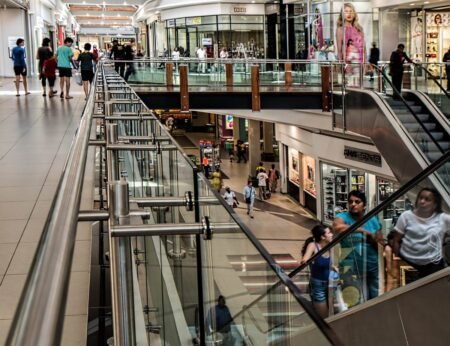The European Commission presented on 30 March a new strategy to make textiles more durable, repairable, reusable and recyclable, to tackle fast fashion, textile waste and the destruction of unsold textiles, and ensure their production takes place in full respect of social rights.
Advertisement
Why do we need to act on textiles?
In clothes and furniture, medical and protective equipment, buildings and vehicles, textiles are the fabric of everyday life. European consumption of textiles has the fourth highest impact on the environment and climate change, after food, housing and mobility. It is he third sector for higher use of water and land use, and fifth for the use of primary raw materials and greenhouse gas emissions.
The average European throws away 11kg of textiles every year. Around the world, a truckload of textiles is landfilled or incinerated every single second. Global textiles production almost doubled between 2000 and 2015, and the consumption of clothing and footwear is expected to increase by 63% by 2030. In parallel with this relentless expansion, negative impacts on resources, water, energy consumption, and the climate continue to grow. The need to address the production and consumption of textiles is now more urgent than ever before.
The textile sectors employs over 1.5 million people in over 160 000 companies, with a turnover of 162 billion in 2019. Composed essentially of small and medium-size enterprises, the textiles ecosystem needs to be accompanied to foster its post Covid-19 recovery and to strengthen its resilience and increase its attractiveness to a talented and skilled workforce. Europe has always been and should remain home to innovative brands, creativity, know-how and quality textile products.
The EU Strategy for Sustainable and Circular Textiles presents a new approach, achieve these objectives in a harmonised manner. The Strategy implements commitments made under the European Green Deal, the new Circular Economy Action Plan and the Industrial Strategy, and aims to create a greener, more competitive and more modern sector, more resistant to global shocks.
What are the main actions included in the Strategy?
The Strategy proposes actions for the entire lifecycle of textiles products, while supporting the ecosystem in the green and digital transitions. It addresses the way textiles are designed and consumed, including by looking also at sustainable technological solutions and innovative business models.
Some of the measures include:
- New design requirements for textiles under the Ecodesign for Sustainable Products Regulation, setting mandatory minimums for the inclusion of recycled fibers in textiles, making them longer-lasting, and easier to repair and recycle. Under the proposed regulation, sustainable textiles products will become the norm in the EU. The proposal would also ban the destruction of unsold products under certain conditions, including unsold or returned textiles.
- Clearer information on textiles and a Digital Product Passport based on mandatory information requirements on circularity and other key environmental aspects.
- Tight controls on greenwashing, with stricter rules to protect consumers and direct links to the upcoming Green Claims Initiative.
- Action to address the unintentional release of microplastics from textiles. In addition to product design, measures will target manufacturing processes, pre-washing at industrial manufacturing plants, labelling and the promotion of innovative materials.
- Harmonised EU rules on extended producer responsibility for textiles, and economic incentives to make products more sustainable (“eco-modulation of fees”), as part of the revision of the Waste Framework Directive in 2023.
- Support to research, innovation and investments and to the development of the skills needed for the green and digital transitions.
- Addressing the challenges related to halting the export of textile waste.
- The co-creation of a Transition Pathway for the Textiles Ecosystem to establish the way forward and set out concrete step on how to achieve the 2030 goals set by the Textiles Strategy.
How does the Strategy address the issue of fast fashion?
Many of the pressures created by the consumption of textiles can be traced back to fast fashion low cost, low quality apparel produced at great speed, often under poor labour conditions outside the EU. The Strategy addresses both the demand and the supply side challenges this creates.
For producers, mandatory design requirements for textiles and greater reliance on extended producer responsibility schemes will help extend the lifetime of clothing.
Through the Transition Pathway, the Commission will engage with stakeholders to scale up resource-efficient manufacturing processes, reuse, repair and other new circular business models in the textiles sector.
The strategy encourages Member States to support the reuse and repair sector at national, regional and local level and adopt tax reductions and other favourable taxation measures for the reuse and repair sector.
On the consumer side, the Strategy will encourage a shift towards quality, durability, longer use, repair and reuse. Through the European Circular Economy Stakeholder Platform, it will mobilise designers, producers, retailers, advertisers and citizens in re-defining EU fashion.
How does the Strategy tackle microplastics?
Textiles made of synthetic fibres, such as polyester and acrylic, are one of the main sources of unintentional release of microplastics into the environment. These microplastics are shed at different stages of the product’s life. The binding design requirements to be introduced under the Ecodesign Regulation for Sustainable Products, and the Commission initiative to address the unintentional release of microplastics in the environment in the second half of 2022, will both consider measures to prevent and reduce the unintentional release of microplastics. These may address product design, improved manufacturing processes, pre-washing at industrial manufacturing plants, labelling and the promotion of innovative materials.
How will the Strategy address the export of textile waste?
The Commission proposal for new EU rules on waste shipments will only allow the export of textile waste to non-OECD countries under certain conditions. Countries must notify the Commission that they wish to import this waste and demonstrate their ability to manage it sustainably. To avoid waste streams being falsely labelled as second-hand goods when exported from the EU, the strategy proposes the development of specific EU-level criteria to distinguish waste properly. The Commission will also work to increase transparency and sustainability in global trade in textile waste and used textiles.
How does the Strategy address the social aspect of the textiles industry?
The strategy brings together environmental and labour concerns to promote greener and fairer value chains across borders. Internationally, as stated in the Communication on Decent Work Worldwide, the Commission will promote decent work conditions in bilateral relations and multilateral fora. It will focus on gender equality in particular, as 75% of global garment workers are women. In addition, through the Better Work Programme, the Commission continues to support third partner countries to improve working conditions and comply with international labour standards.
In parallel, the proposal for a Corporate Sustainability Due Diligence Directive introduces a corporate sustainability due diligence duty for very large companies to address negative impacts on human rights and the environment, both in their own operations and in their global value chains.
Under the EU Pact for Skills, workers in the textiles sector will be given the tools to upskill, reskill and acquire new skills. This will lead to greater diversity in age and gender in company management. EU funding programmes will continue support the sector and its workers.
How will the EU work with its international partners to promote sustainable textiles worldwide?
Around 73% of the clothing and household textiles consumed in Europe are produced in and imported from countries outside the EU. In 2017, the EU produced 7.4 kg of textiles per person while consuming nearly 26 kg, making it a net importer. In particular, in 2019 the EU was one of the largest global importers of clothing with a combined value of 80 billion. This is why, the Strategy promotes international collaboration to reduce negative environmental and social impacts. To promote sustainable textiles, the EU will pursue progress in international groups (G7, G20), in the context of the Global Alliance for Circular Economy and Resource Efficiency and the United Nations Environment Assembly. The Commission will engage with other partners at global, regional and bilateral levels to promote cooperation and initiatives that support sustainable textile value chains and sustainable fashion.
What does the Strategy mean for companies and manufacturers?
The sector will need to integrate circularity principles in its business models, and minimise its environmental footprint. These efforts will open new business opportunities and strengthen the sector’s resilience. The Commission will support the sector in this transition, while engaging in a transparent Transition Pathway with textiles economic actors.
The Commission is working on a common industrial technology roadmap on circularity, which aims to streamline industrial research and innovation, including on textile recycling. Financial support for the sector’s transition will be available under Horizon Europe’s European Partnerships, the LIFE programme, and the Digital Europe Programme for the development of skilled experts to support the textiles industry in its digitalisation.
What is the Transition Pathway and how will it work?
The transition pathway will be a long-term plan for the textile ecosystem to successfully achieve the green and digital transitions and for the ecosystem to become more resilient. It will address the need to embrace innovation and digitalisation, transform the way we produce, use and dispose of textiles and invest in a workforce with the right skills. It will detail key actions to be taken and set targets and commitments. Indicators will be used to assess and monitor performance over time, impacts on the competitiveness of European companies and possible innovation needs and investment gaps.
The Commission invites all interested parties and in particular SMEs, public authorities, social partners and research organisations to express their views on how best to realise the transition, while boosting resilience. All those concerned can provide feedback through an online survey and follow up workshops.
Factsheet on the EU Strategy for Sustainable and Circular Textiles
EU Strategy for Sustainable and Circular Textiles
Transition Pathway for the Textiles Ecosystem
Source: European Commission







